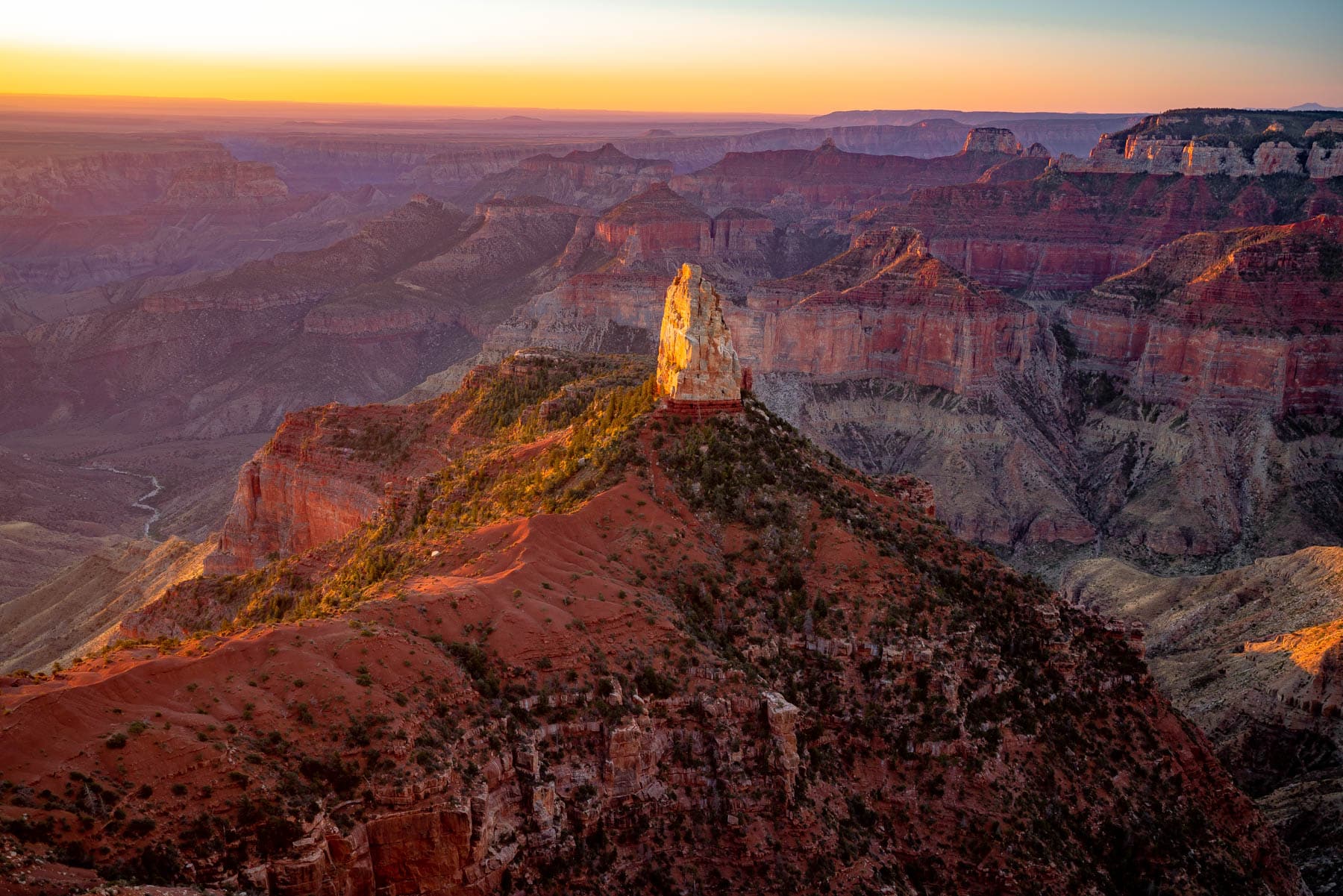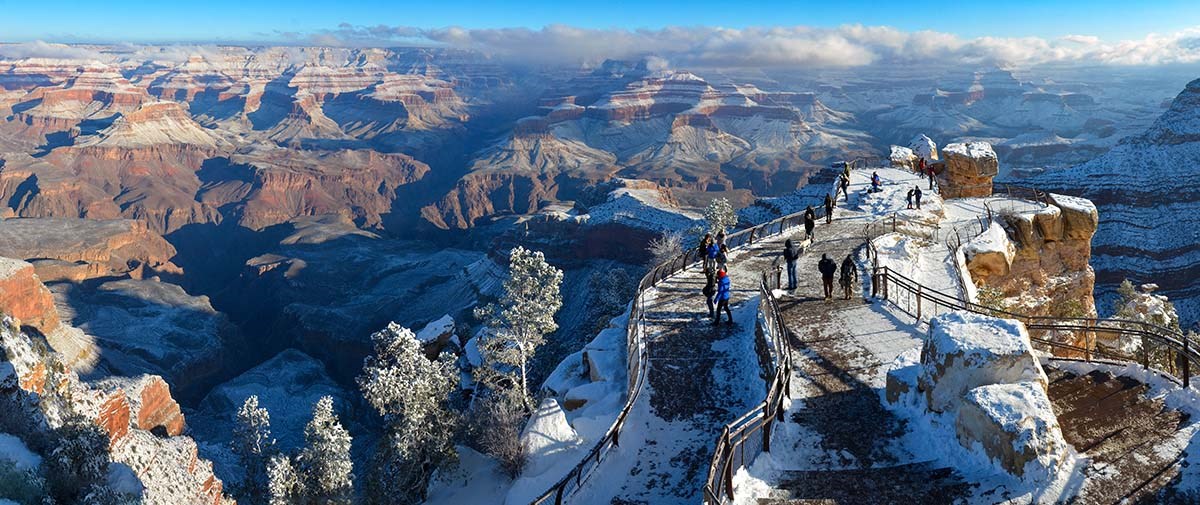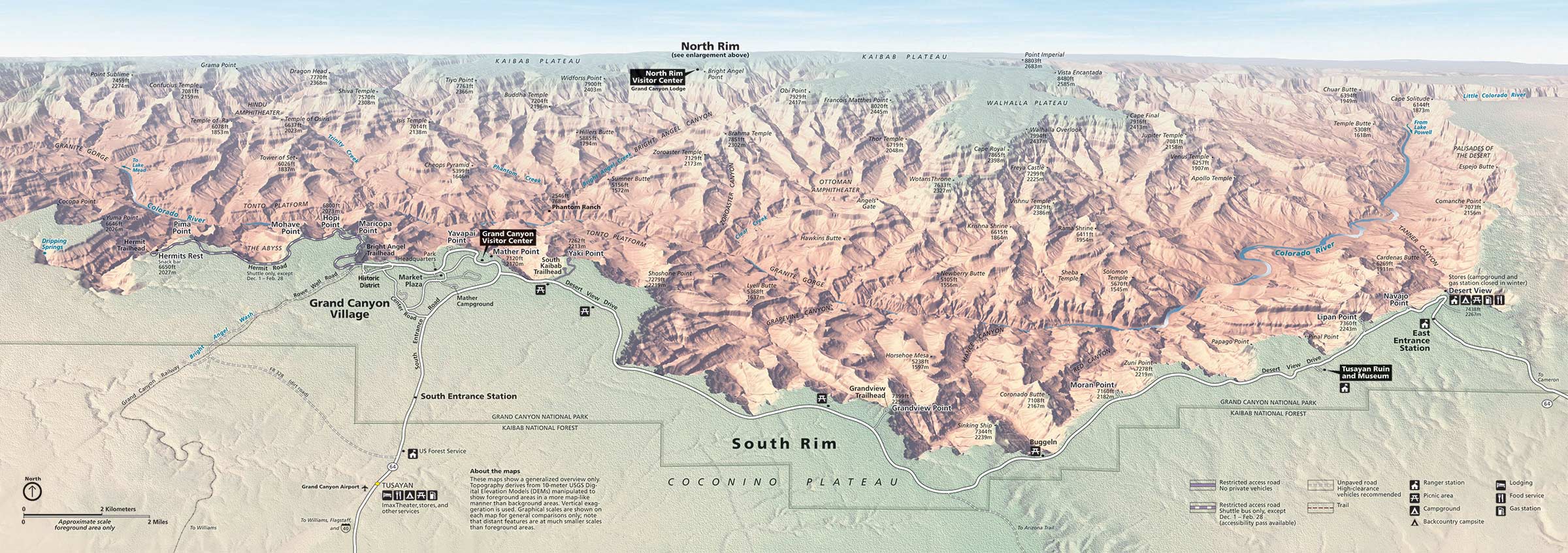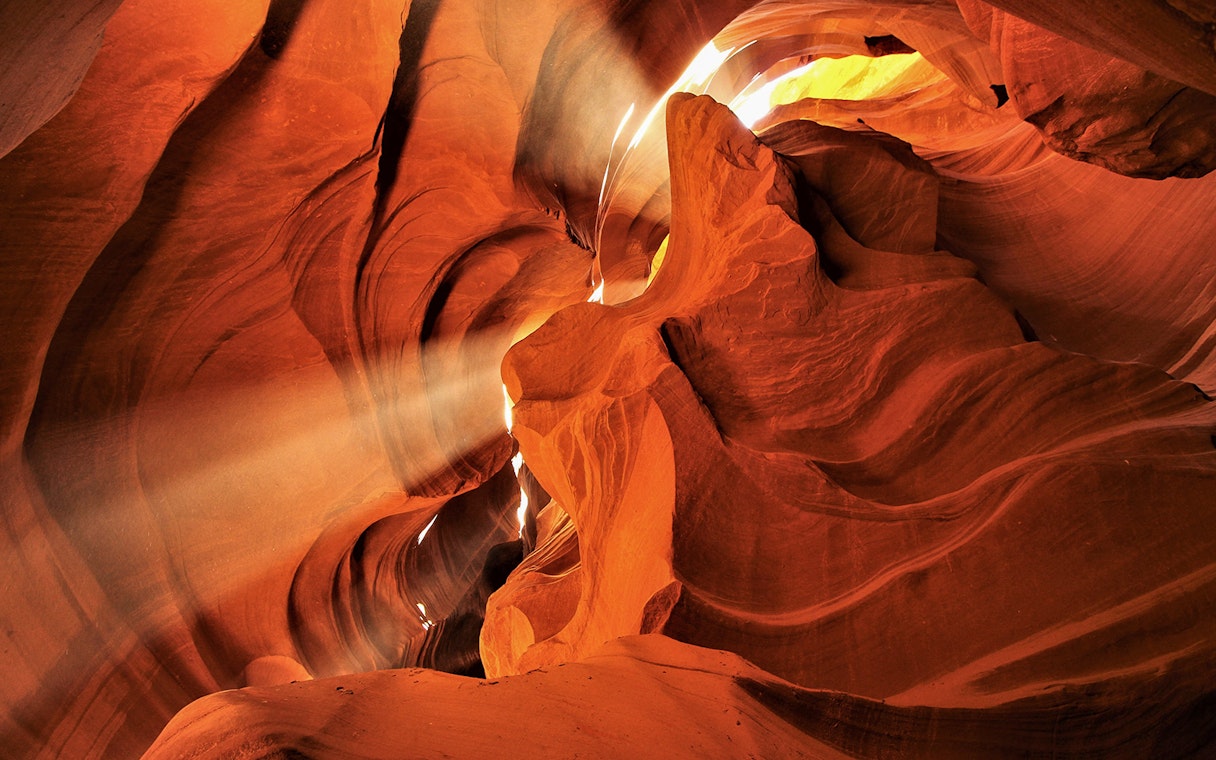







Carved over millions of years by the relentless force of the Colorado River, the Grand Canyon stands today as one of the most awe-inspiring natural wonders on Earth. Located in northern Arizona, this vast geological masterpiece spans 277 miles in length, up to 18 miles wide, and plunges more than a mile deep. The Grand Canyon is not only a breathtaking sight but also a sacred place for Native American tribes and a UNESCO World Heritage Site that draws millions of visitors from around the globe every year.
The Grand Canyon is more than just its immense scale—it’s about the layers of ancient history revealed in its rock formations, the astonishing biodiversity that thrives within its ecosystems, and the endless opportunities it provides for adventure, reflection, and discovery. Whether you’re a seasoned hiker, a casual sightseer, or a nature enthusiast, the Grand Canyon offers experiences that are both humbling and exhilarating.

The Grand Canyon’s formation is a story of time, water, and rock. Over the course of approximately 5 to 6 million years, the Colorado River has cut through layers of limestone, sandstone, shale, and granite, exposing nearly 2 billion years of Earth’s geological history. This monumental natural archive offers scientists and visitors alike a window into the ancient past.
Geographic Facts:
Location: Northern Arizona, primarily within Grand Canyon National Park.
Elevation Range: From about 2,400 feet (Colorado River) to over 7,000 feet (South Rim).
Major Rims: South Rim (most accessible and popular), North Rim (higher elevation, fewer visitors), West Rim (home to the Skywalk).
The geology of the canyon is renowned for its vivid stratification. Each layer tells a story of ancient environments—from ancient oceans to desert dunes. Some of the most notable rock layers include the Kaibab Limestone (the uppermost rim layer), the Bright Angel Shale, and the ancient Vishnu Schist found at the canyon’s deepest levels.

The South Rim is the most visited part of the Grand Canyon, open year-round and offering the most comprehensive range of facilities, viewpoints, and activities. Known for its easily accessible vistas and well-developed infrastructure, the South Rim attracts families, solo travelers, photographers, and hikers alike.
Key Attractions:
Grand Canyon Village: Historic center with visitor services, museums, lodges, and a railway depot.
Mather Point: Iconic viewpoint offering expansive canyon vistas perfect for first-time visitors.
Bright Angel Trail: A popular hiking route descending into the canyon, allowing for both short walks and multi-day treks.
Hermit Road Scenic Drive: Features several stunning overlooks including Hopi Point, known for sunset views.
Yavapai Geology Museum: Offers educational exhibits about the canyon’s geological history.
Activities on the South Rim:
Guided ranger programs on geology, wildlife, and history.
Photography tours capturing sunrise and sunset vistas.
Shuttle bus loops for easy transportation between viewpoints.
Seasonal art exhibitions and cultural demonstrations.

Less developed and open only from mid-May to mid-October, the North Rim offers a more secluded and rugged experience, with cooler temperatures, higher elevations, and a dramatically different ecosystem. This area attracts those looking for solitude and a deeper connection to nature.
Highlights:
Bright Angel Point Trail: A short, scenic walk to panoramic views of the inner canyon.
Cape Royal and Point Imperial: Outstanding vistas with fewer crowds, offering views of the Colorado River and Painted Desert.
Roosevelt Point: Named after President Theodore Roosevelt, a passionate advocate for the Grand Canyon’s preservation.
Transept Trail: A serene forested hike with canyon views and opportunities to spot wildlife.
Activities on the North Rim:
Backcountry hiking and camping.
Educational talks by park rangers.
Wildlife observation: mule deer, bison, and California condors.

The West Rim, managed by the Hualapai Tribe, is famous for the Grand Canyon Skywalk, a glass bridge extending over the canyon’s edge, offering thrilling views straight down to the canyon floor. This area provides a more curated and commercial experience than the national park sections.
Other Features:
Eagle Point: Named for a rock formation resembling an eagle.
Guano Point: Spectacular 360-degree canyon views with minimal barriers.
Hualapai Ranch: Offers cultural experiences, cowboy shows, and accommodations.
Activities on the West Rim:
Helicopter tours from Las Vegas.
Ziplining adventures over desert landscapes.
Cultural performances and storytelling by Hualapai Tribe members.

The Grand Canyon offers trails for all skill levels, from short scenic walks to challenging backcountry routes.
Rim Trail: Easy, mostly paved path with multiple viewpoints.
Bright Angel Trail: Moderately strenuous, descending into the canyon with rest stops.
South Kaibab Trail: Known for dramatic views and steep descents.
North Kaibab Trail: The only maintained trail into the canyon from the North Rim, leading to the Colorado River.
Adventurers can experience the canyon from the river with rafting trips ranging from one-day excursions to multi-week journeys. Options include smooth-water trips and white-water adventures through rapids like Lava Falls.
Aerial tours provide a breathtaking perspective of the canyon’s vastness and geological diversity, often combining views of Lake Mead, Hoover Dam, and the Las Vegas Strip.
Historic mule trips offer a unique and traditional way to explore the canyon trails, with options for short rides or overnight journeys to Phantom Ranch.
The Grand Canyon’s remote location and clear skies make it an ideal spot for stargazing and astrophotography. The park hosts annual Star Parties with telescopes and expert guidance.

Spring (March – May): Mild weather, fewer crowds, blooming desert flora. Ideal for hiking and photography.
Summer (June – August): Peak tourist season, hot temperatures, especially below the rim. Prepare for thunderstorms during the monsoon season.
Autumn (September – November): Pleasant temperatures, vivid foliage contrasts at higher elevations, fewer visitors, ideal for longer hikes.
Winter (December – February): Snow-capped rims, serene landscapes, South Rim remains open; North Rim closed due to snow.

By Air:
Nearest major airports: Phoenix Sky Harbor (PHX), Las Vegas McCarran (LAS).
Regional airports: Flagstaff Pulliam Airport (FLG), Grand Canyon National Park Airport (GCN).
By Car:
From Phoenix: Approx. 3.5-4 hours to the South Rim.
From Las Vegas: Approx. 4-5 hours to the West Rim.
Shuttle Services:
Free shuttles operate within the South Rim, connecting major points of interest. Shuttle routes include Village, Hermit Road, and Kaibab/Rim routes.
Rail Access:
Grand Canyon Railway: Offers scenic train rides from Williams, Arizona to the South Rim.

Entrance Fees: Per vehicle, per person, or annual passes available (America the Beautiful Pass recommended).
Lodging: Options range from historic lodges within the park to hotels in nearby towns like Tusayan and Williams.
Permits: Required for backcountry camping, river trips, and some guided activities.
Safety: Stay hydrated, respect wildlife, prepare for drastic temperature changes.
Food: Dining options vary from snack bars to fine dining at El Tovar Hotel.
Accessibility: Many viewpoints and facilities are wheelchair accessible.

Horseshoe Bend: A dramatic curve in the Colorado River near Page, Arizona.
Antelope Canyon: Famous for its narrow slot canyons and light beams.
Monument Valley: Iconic desert landscapes featured in countless films.
Sedona: Known for its red rock formations, art galleries, and spiritual vortexes.
Lake Powell and Glen Canyon Dam: Recreational boating and scenic views.

The Grand Canyon is sacred to numerous Native American tribes, including the Hualapai, Havasupai, Hopi, Navajo, and Zuni. Their histories and traditions are deeply intertwined with the land. Respect for the cultural significance of the canyon is vital, and many tribes continue to practice ceremonies and maintain connections to the area.
Environmental stewardship is also crucial. The Grand Canyon’s delicate ecosystems support unique plant and animal life adapted to its harsh environment. Preservation efforts focus on reducing human impact, managing water resources, and protecting endangered species.
Visiting the Grand Canyon is more than a trip—it’s a transformative experience. The sheer scale, geological history, and natural beauty leave visitors in awe, fostering a deep appreciation for nature’s power and the passage of time.
Whether you stand quietly at the rim during sunrise, raft the roaring Colorado River, hike its ancient trails, or gaze up at the infinite stars above, the Grand Canyon offers moments of wonder that resonate long after you leave. A journey here is a journey through the very heart of the Earth itself.
The Grand Canyon teaches patience, humility, and respect for nature’s grand designs. Its vast landscapes, spiritual depth, and timeless beauty continue to inspire adventurers, artists, writers, and dreamers from around the world. It is not merely a destination—it is a pilgrimage into the extraordinary.


Findestinations — Your trusted source for travel inspiration, destination guides, and expert tips to help you explore the world with confidence and curiosity.


8 responses to “The Grand Canyon, North Arizona, America: A Comprehensive Travel Guide to One of the World’s Natural Wonders”
What a read! Felt like I was already there. Didn’t realize how much biodiversity the canyon holds. Makes me want to slow down and really take it all in—not just snap a photo and leave.
Thanks for the seasonal tips! I was considering a winter visit and wasn’t sure what would still be open. Knowing that the South Rim stays accessible really helps.
We’re doing a family trip with kids next year and this was super useful. Love how you included activities for all levels—ranger programs and stargazing sound perfect for our little ones.
Reading this gave me chills. I visited the South Rim last spring and the views from Mather Point were beyond words. Great tip on the Hermit Road scenic drive—Hopi Point at sunset was unreal.
Such a thorough and inspiring read. We’re visiting in September and had no idea you could take a train to the South Rim. Adding the Grand Canyon Railway ride for sure!
I’m planning my first US road trip next year, and this post just made me add the Grand Canyon to my list. Didn’t know about the North Rim being so peaceful—sounds perfect for autumn travel!
My girlfriend and I did a mule ride to Phantom Ranch last year and it was unforgettable. Definitely not for the faint of heart—but what a perspective. Highly recommend it for adventurous couples!
I live just a few hours from the Grand Canyon, and this still taught me a few things. Especially loved the reminder to check out the Yavapai Geology Museum—great for kids too.